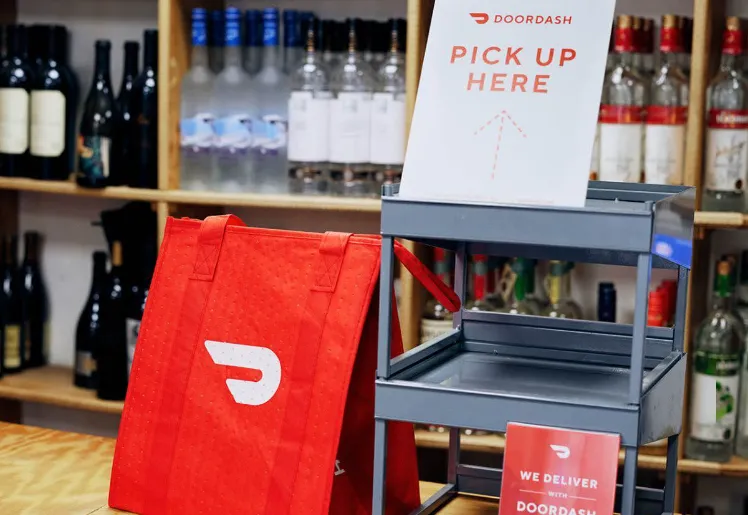Grocers have navigated a challenging economic climate so far in 2024 as the profitability that powered them through the COVID-19 pandemic deflates and they face pressure to focus on value.
Consumers continue to worry about prices in grocery aisles even as inflation has tempered from record highs, leading them to adopt shopping behaviors like making trips to multiple retailers in search of low prices. Customers have largely returned to in-store shopping post-pandemic, placing renewed emphasis on in-store experiences.
What “grocery shopping” means has blurred as convenience stores, mass discounters and big-box chains like Walmart and Target beef up their grocery assortments.
As grocers grapple with consumer behavior changes, here are seven big questions facing the grocery industry in the near term.
How will the outcome of the proposed Kroger-Albertsons deal impact the industry?
As dates loom for the court cases assessing whether or not to block the grocery giants’ mega-deal, grocers continue to be on edge about how the fate of the proposed merger will unfold.
If Kroger and Albertsons are allowed to consummate their deal, a major new supermarket competitor will take shape. C&S Wholesale Grocers will also quickly become a key grocery competitor in markets where the company would pick up stores divested as part of the merger.
Grocers are also awaiting to see how the deal, if approved, would impact supply chains, the labor force and regional competition.
The grocery industry has already seen a flurry of mergers and acquisitions among regional and smaller grocers — moves experts have said can help smaller retailers gain the scale needed to face off against larger competitors.
There’s also the possibility that the state-level and federal efforts to block the merger will succeed, dealing a significant blow to both Kroger and Albertsons. Either scenario carries significant implications for the industry, and companies will be eagerly watching for updates over the coming weeks and months.

How does grocery e-commerce fit into “new normal” behaviors?
While grocery e-commerce sales are still higher than before the pandemic, softening demand and fierce online competition from mass retailers have retailers grappling with how to solve e-commerce’s profitability challenges.
Despite experts’ predictions that grocers would embrace white-label and in-house e-commerce operations, grocers have continued to link up with third-party marketplaces like Instacart and DoorDash to reach online consumers and to handle delivery services.
Grocers with in-house e-commerce operations are tweaking their strategies. Kroger closed three spoke facilities as part of its e-commerce hub-and-spoke network with Ocado in May while Giant Eagle is looking to its first automated micro-fulfillment center to fill order orders, including curbside ones.
As grocers figure out how to cater to online customers in this “new normal,” they face a range of questions. Will memberships with delivery perks, like Kroger Boost and Walmart+, become more common in the industry? How will grocers decide between offering in-store or curbside pickup?
How will grocers combine in-store and digital retail media?
Retail media has become imperative for grocers to remain competitive, and now that in-store and omnichannel retail media capabilities are in use by grocers of all sizes, experts believe the next step is to connect in-store retail media technology with consumers’ phones.
Grocer’s apps are meant to be used in-store, and with in-store retail media working to become more personalized, experts predict that getting these in-store screens to recognize a specific shopper in the aisle through the app and project an ad relevant to them makes for an incredibly impactful experience. However, privacy laws and the newer nature of in-store retail media make this a tricky area to develop in the U.S.
But retail media networks have taken small steps to connect with grocers’ apps. Sam’s Club in late July announced the launch of display ads in its app’s Scan & Go feature, enabling relevant pop-up ads to appear as customers add items to their cart.

How can grocers continue to gain on restaurants’ pain?
Grocers have made strides in 2024 so far on foodservice innovation. Giant Food is dedicating more space to meal solutions in its new stores and Publix is adding burrito bowl bars to its supermarkets. Meanwhile, Kroger launched in March new oven- and microwave-ready seafood options under its Private Selection, Kroger and Home Chef brands.
In a direct shot at restaurants, several grocers including Town & Country Markets and Macey’s Market Little Cottonwood recently debuted in-store restaurants.
While food-at-home spending was just a little over 1% higher in June compared to the same time last year, food-away-from-home spending increased 4.1% year over year, according to the latest Consumer Price Index data released by the U.S. Bureau of Labor Statistics.
As restaurant dining resurges, what will grocers do next to stay hot on restaurants’ heels in the battle for consumers’ meal dollars?
How can grocers better meet consumer needs with alternative store formats?
Whole Foods Market’s 365 store concept, Publix’s GreenWise banner and Schnuck Markets’ EatWell Market have all joined the graveyard of alternative grocery formats. Despite the challenges, grocers still have opportunities to introduce shoppers to new, highly relevant store formats.
For instance, while 365 may not have lasted, Whole Foods is gearing up to launch a new small-store concept called Daily Shop, which is slated to open its first of several New York City locations this fall in the Upper East Side
A 75,000-square-foot store is small for supercenter retailer Meijer, but the Meijer Grocery concept has a clear mission of offering the traditional grocery shopping experience. Meijer goes even smaller with its small-scale markets, like Fairfax Market, which spans approximately 40,000 square feet and focuses on fresh produce and local grocers with a mix of private label and national brands.
Alternative formats should focus on offering a differentiated and curated shopping experience, but it’s vital they meet consumers where they are. Grocery companies should focus on making these formats inexpensive and convenient experiences rather than premium ones.

How will grocers evolve private label strategies to grow customer loyalty?
Inflation has been a hook for grocers when promoting their private label lines, but with inflation slowly receding, it begs the question as to how grocers can ensure the popularity of their store brands will prevail.
It seems like every food retailer has a private label line or even two, and these retailers have used customers’ reliance on these goods to redefine private label to mean “quality” rather than “cheap.”
Consumers are more frequently choosing their retailer based on the quality and variety of private label goods offered, according to Diana Sheehan, principal and CEO of PDG Insights.
FMI — The Food Industry Association’s latest Power of Private Brands report FMI’s report findings also showed that private brands are helping grocers lock in customer loyalty, and that loyalty is not based solely on the products’ lower prices.
And with private label not being viewed as a trade down anymore, maintaining that “quality and variety” image will be vital for holding onto customer loyalty moving forward.
How will grocers assess checkout technology investments and weigh risks?
The trials and tribulations of checkout technology have proven to be an ongoing saga for grocers as they work to balance a positive customer experience with battling shrink.
Some grocers have pulled back on digitally driven checkout methods — such as Wegmans dropping scan-and-go and Whole Foods removing Amazon’s Just Walk Out technology — while others have been trying out creative solutions. Kroger, for example, added safety measures like receipt checks to select Columbus, Ohio-area stores while Safeway has been introducing receipt-scanning gates at self-checkout areas since at least last summer.
While it may be tempting for grocers to simply revert back to the traditional checkout experience altogether, customers are still seeking out checkout options like self-checkout.
In 2023, self-checkout had a record year a trend driven in part by grocery and convenience store chains in the U.S., according to data from RBR Data Services.
Sam’s Club is an example of a retailer that has made scan-and-go work wonders, with 1 in 3 of its members saying they use the capability on a regular basis, the club retailer shared earlier this year.















